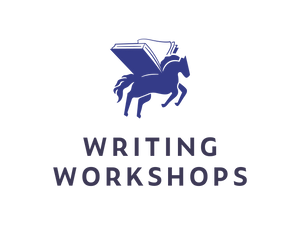Getting Your Foot in the Door: an Interview with Meg Eden Kuyatt on Publishing in Literary Magazines
by Writing Workshops Staff
A year ago

Instructor Meg Eden Kuyatt is the author of the 2021 Towson Prize for Literature winning poetry collection Drowning in the Floating World and children’s novels including a 2023 ALA Schneider Family Book Award Honor Good Different, and the forthcoming The Girl in the Wall (Scholastic, 2025). Her work is published or forthcoming in magazines, including Writer’s Digest, Prairie Schooner, The Rumpus, Poetry Northwest, Crab Orchard Review, RHINO, and CV2.
Kuyatt returns to teach her popular seminar, Getting Your Foot in the Door: Publishing in Literary Magazines.
Kuyatt brings her wealth of experience to WritingWorkshops.com. This course is designed to demystify the often opaque world of literary magazine submissions, offering participants invaluable insights into what editors seek and how to make their work stand out. From crafting compelling cover letters and contributor bios to handling rejections with grace, Kuyatt's seminar promises to equip writers with the tools they need to navigate the publication landscape successfully.
Join us for an engaging conversation with Meg Eden Kuyatt, exploring her journey, the nuances of literary magazine submissions, and her advice for aspiring writers looking to leave their mark.
What inspired you to create this seminar on publishing in literary magazines, and what do you hope participants will take away from it?
I hope folks will take a few things from this course. The main one is to persist. Litmags accept a very small percentage of submissions, but a no doesn’t mean to stop submitting. Some of the magazines I’ve gotten published in took 10+ submissions before I heard a yes.
But also I hope this class will empower folks to find which litmags are a fit for their work, and get them excited about writing and submitting!
There are lots of “fish in the sea” and it’s OK if some litmags aren’t a fit. In this workshop, I want everyone to walk away with the tools for how to discern if a litmag is for you, and the confidence in preparing submission materials and sending work out!
Can you share a bit about your own journey with literary magazine publications? How did you get started, and what were some key moments that helped you along the way?
I started sending out to litmags when I was in high school, and got encouraged by some acceptances. The kind notes on rejection letters and the encouraging readers kept me going. I honestly can’t remember how I got started, only that I knew I wanted to be a writer and I knew this was something I needed to do if I wanted that.
One of the course takeaways is learning to craft effective cover letters and contributor bios. What are some common mistakes writers make in these areas, and how can they be avoided?
Overthinking it! We’ll talk in the course about how to keep it simple. People often try to overcomplicate or overthink it. These things are like a handshake; brief and to the point. We’ll show some examples so you can feel comfortable with your bio and cover letter.
Handling rejections is a significant part of the submission process. What advice do you have for writers to stay motivated and use rejections constructively?
First off, look for any specific notes or feedback. If it’s there, absorb it. Does this help clarify your intent with the piece? Or does the feedback distract from your goals? Sit with it for a while, and if it can help you edit, great. If not, then put it aside and move on.
Second, use it as a motivator. Send ten new submissions for every rejection. Do the 100 rejections a year challenge. Whatever helps you persist.
Finally, find a fun way to cope. For one chapbook that got some frustrating reviews, I made a pinata for my release with the reviews on it. It was very cathartic! Steven King had that stake hanging his thick stack of rejection letters, if I’m remembering it right. We’ll talk about some other examples in the course of how to transform frustration into humor and motivation, but keep going!
The seminar includes a “translation” exercise. Could you explain what this exercise involves and how it helps participants understand literary magazine submissions?
This is where we’ll break down what things to analyze in a literary magazine issue to determine if it’s a good fit for you or not. After we discuss those components, we’ll take time to practice this on our own with sample magazines and share our findings. It’s very hands-on and concrete for helping you make a list of magazines to send to. Students say time and again that they find this very helpful, and it’s one of my favorite activities!
In your opinion, how important is it for writers to build relationships with editors and other writers through literary magazines, and what are some effective ways to do this?
This is a great way to start connecting with the writing community. It’s one option. Particularly when you engage with litmags in your local community. I will stress in the course too—engage with your local writing community! We’ll talk about some concrete ways you can do this, too.
*******
Whether you're an emerging writer looking to make your mark or an experienced author seeking to refine your submission strategy, Kuyatt's expertise and guidance are invaluable.
Don't miss this opportunity to learn from one of the literary community's most dynamic voices.
Enroll in Getting Your Foot in the Door: Publishing in Literary Magazines and take a significant step toward achieving your publishing goals.
Secure your spot today and start your journey towards literary success!
